Display cases in the Robertson Aviation Safety Center (RASC II) provide a glimpse into the variety of documents that may be found in the Aviation Safety and Security Archives (ASASA). The items in this display were selected to highlight several of the Archives' collections. The display was originally created for the dedication of the RASC II in October 2009.
Collections represented in this display include the S. Harry Robertson Papers, Richard G. Snyder Papers, David S. Hall Papers, David Haddon Holladay Papers, Charles Mercer Papers and the Aviation Research Collection. The items are representative of many of the record types that may be found in the Archives and include documents from accident investigation case files, correspondence, publications and photographs.
Helicopter Crash on the Salt River
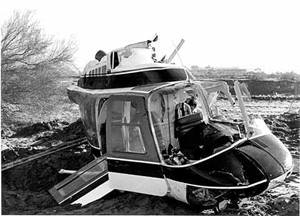
Harry Robertson's career has included work in the fields of aviation safety, safety research, crash investigation and crash investigation education, as well as in the design, development, testing and production of crashworthy, ballistically tolerant fuel systems used by military aircraft worldwide.
The Robertson Papers include accident investigation case files (including over 15,000 photographs); technical papers, reports and reference material; a video library; and books and periodicals. The selected items on display come from one of the accident investigation case files.
The Accident
On December 21, 1978, a Bell 206 Jet Ranger helicopter was on a power-line patrol for Arizona Public Service (APS) along the Salt River. A tower collapsed due to water action in the flooded river, and the helicopter was struck by a static cable.
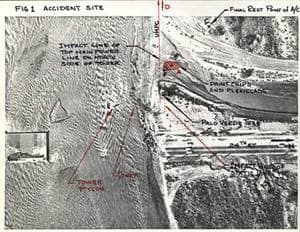
As part of the investigation carried out by James Turnbow and Dan Clark, a plan of the accident site was created.
The investigation concluded that the helicopter "was placed in jeopardy by being positioned inside the general curvature of the hi-line ... and sufficiently close to a straight line between the towers immediately to the east and to the west of the potentially collapsing tower to allow the lines to fall over the aircraft."
In order to avoid a similar accident in the future, the investigation report suggested that if tower collapse is possible, an inspection flight should approach:
- From outside of the hi-line curvature.
- From above.
- At a sufficient distance on the inside of the cord line between adjacent towers to allow a safe clearance in event of a collapse.
Alternatively, it was also suggested that the use of binoculars could avoid the need for a close approach.
Additional information on this, and other accident case files, is available in the Archives.
Crashworthiness Study
Richard G. "Jerry" Snyder is an internationally known research scientist with expertise in human impact tolerances and trauma mechanisms, biomechanics, forensic anthropology and anthropometry, crash protection, and transportation safety. The Snyder Papers consist of materials created and collected by Snyder in the course of his work as a research scientist over 50 years.
General Aviation Crashworthiness
Among Snyder's many publications and presentations is his 1975 paper "Crashworthiness Investigation of General Aviation Accidents," which was originally presented at the Business Aircraft Meeting in Wichita, Kansas, on April 8-11, 1975, and published by the Society of Automotive Engineers. A condensed version of this paper was published in The Society of Air Safety Investigators (SASI) Forum in Fall 1975.
"The fact that an accident is 'investigated' does not necessarily mean that either crashworthiness information is obtained, or, if it is, that the design engineer will learn of, or from, the results." Snyder discusses a University of Michigan study to illustrate findings relative to occupant injury mechanisms, relative crash protection and crashworthiness performance of then-current models of aircraft.
Hugh De Haven
His experience in a 1917 aircraft accident — and his belief that his injuries were caused by poor design — led Hugh De Haven to devote his career to studying crashworthiness and passenger protection. The Snyder Papers include correspondence with Hugh De Haven, as well as copies of De Haven's collected papers and files. This paper discussed in this undated letter from De Haven to Snyder is most likely Snyder's 1975 paper on "Crashworthiness Investigation of General Aviation Accidents."
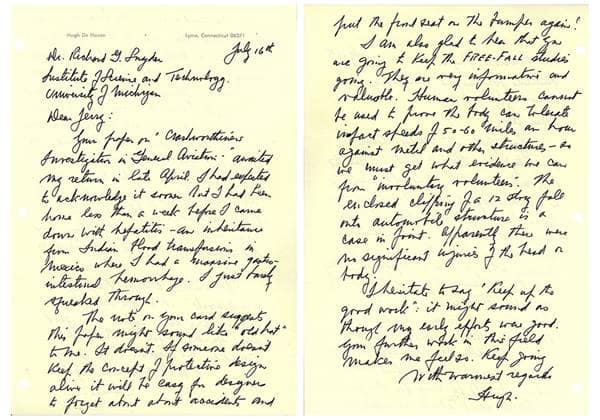
Additional information on Snyder's and De Haven's crashworthiness studies is available in the Archives.
NASA/FAA Crash Tests
David S. Hall is a specialist in mishap prevention and investigation, and has conducted research and analysis relating to aircraft safety and crashworthiness. The Hall Papers contain reference materials on aviation safety subjects, accident investigation case files and publications.
The Crash Tests
During the 1970s, NASA and the FAA initiated a general aviation crash test program. The tests were conducted at the Langley Impact Dynamics Research Facility, where a 73-meter-high and 122-meter-long gantry was used to conduct drop tests in which aircraft were suspended by cables and then allowed to fall or swing pendulum style to contact the impact surface at varying attitudes.
The following photographs show one of the test aircraft shortly before impact and at impact:
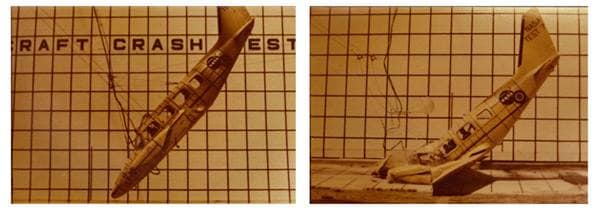
In addition to carrying instruments and crash test dummies that were analyzed following the test, the crash tests were carefully photographed so that the impact sequence could be studied.
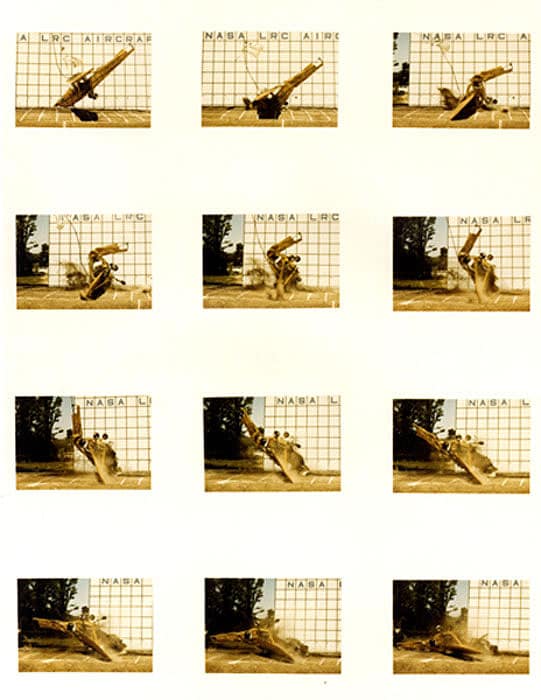
Additional photographs, papers and reports related to aircraft crash tests are available in the Archives.
Accident Investigation
David Holladay was an aviation safety consultant and accident investigator. After retiring from the Air Force, he became head of the aerospace safety curriculum at the University of Southern California. The Holladay Papers contain accident investigation case files; reference and research files; and manuals and other published material. The selected items on display come from one of the accident investigation case files.
The Accident
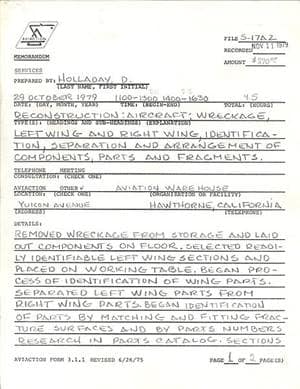
On November 24, 1973, a Mooney M-20 crashed following an in-flight separation of the left wing. During his investigation, Holladay conducted a careful examination of the wreckage.
Holladay created display boards for use when testifying about accident investigations. The illustrations shown below are just two of the display boards created for this accident case.
Holladay identified the contributory causes of the in-flight failure as, "the design of the wing, the selection of materials, the fabrication of those materials in respect to assembly, quality control during assembly and production, and the provision of information by the manufacturer, and the manufacturer's responsibility for surveillance of his product."
The NTSB investigation found improperly bonded glue joints and deteriorated ribs and auxiliary wing spars. The probable cause was improper maintenance, inadequate inspection by maintenance personnel and material failure of the wing structure.
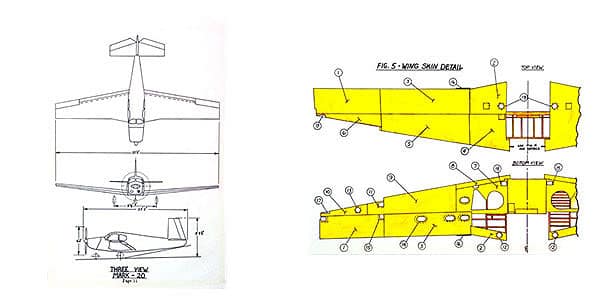
Additional information on this, and other accident case files, is available in the Archives.
Cabin Safety
Charles Mercer had a long career as an engineer with Lockheed Corporation and also served as a member of the company's accident investigation team. Following his retirement from Lockheed, he started a consulting firm and also lectured on aviation safety and accident investigation. The Mercer Papers contain reports, manuals and assorted publications by Mercer and others related to aviation and safety.
Safety With Comfort
Among Mercer's publications is this 1975 paper, which he presented at the Flight Safety Seminar of the Orient Airlines Association (now known as the Association of Asia Pacific Airlines). In "Safety with Comfort in the Passenger Cabin," Mercer discusses the interface between safety requirements and the desire for comfort in airliner passenger cabins. The cabin designer faces a challenge in the need to meld these requirements to produce a viable and marketable product.
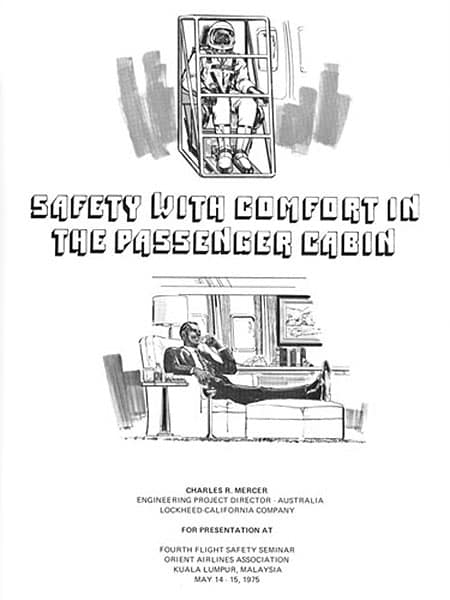
This paper has been digitized by the Archives and may be read online.
Additional material related to cabin safety issues is available in the Archives.
Aerospace Medicine Reports
The Aviation Research Collection contains various materials collected by the archives. Included are aviation accident reports, NTSB and FAA reports and studies, training materials, books, journals, and video recordings on aviation safety and aviation security topics.
FAA Office of Aerospace Medicine
Technical reports on aerospace medicine have been published since 1961 by the FAA Office of Aerospace Medicine and its predecessor agencies, the Civil Aerospace Medical Institute (CAMI) and the Civil Aeromedical Research Institute (CARI). Copies of these reports are available in the Archives' Aviation Research Collection.
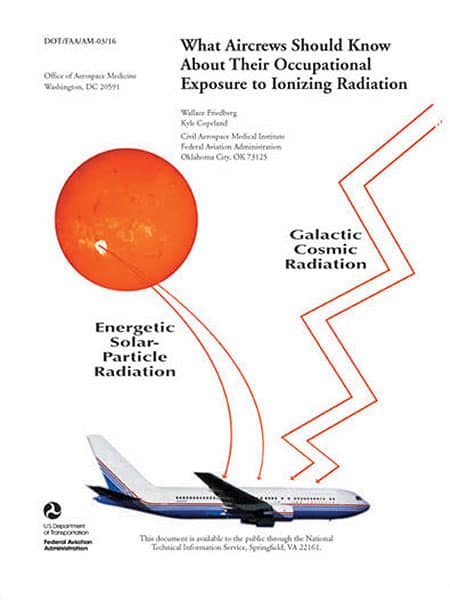
Additional reports, studies and other publications related to aerospace medicine are available in the Archives.
Contact Us
Robertson Aviation Safety Center II (Building 22)
Prescott, Arizona 86301
